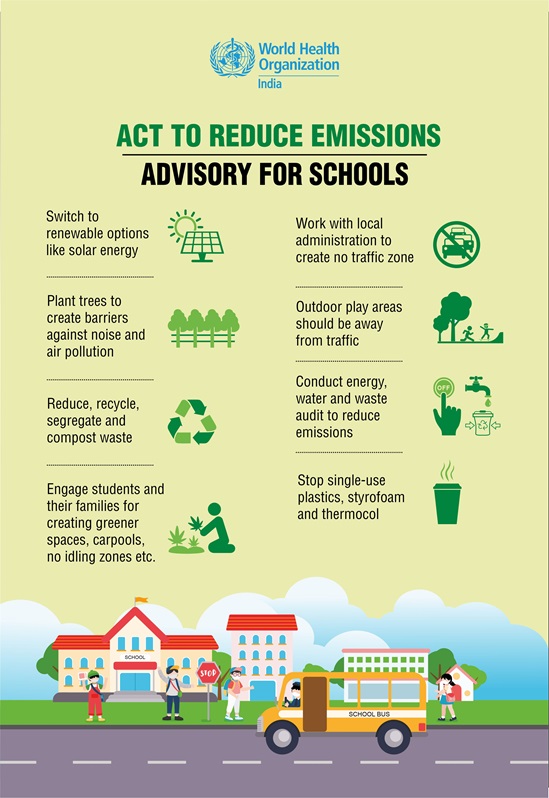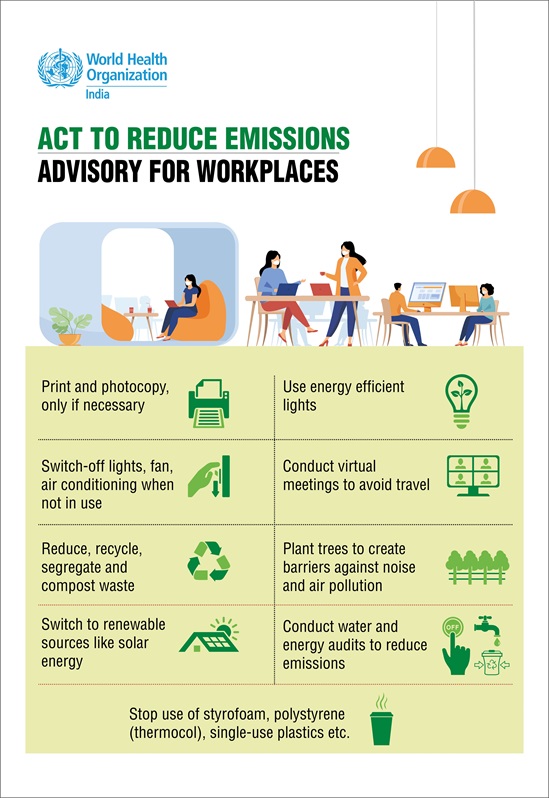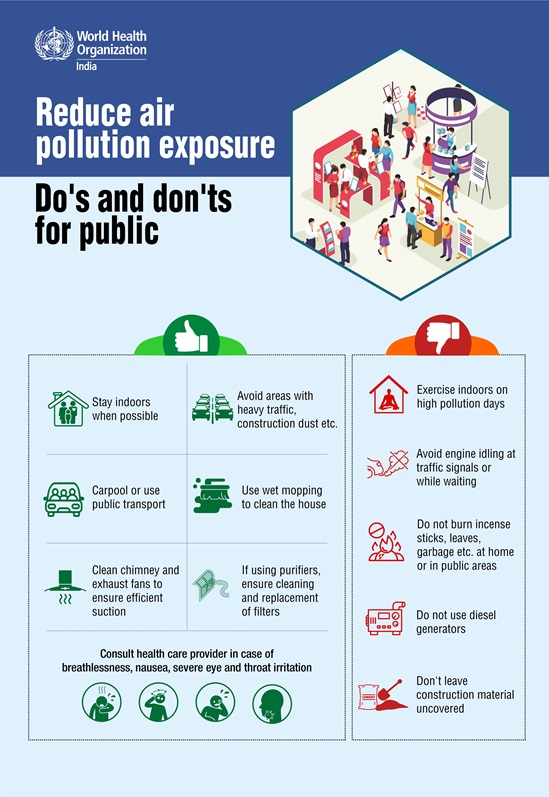
Air pollution
Air pollution is a major and pressing public health threat. WHO estimates that around 7 million people die every year from exposure to fine particles in polluted air that lead to diseases such as stroke, heart disease, lung cancer, chronic obstructive pulmonary diseases and respiratory infections, including pneumonia. Pollutants include particulate matter, carbon monoxide, ozone, nitrogen dioxide and sulphur dioxide. Both ambient (outdoor) and household (indoor) air pollution are harmful for health.
Industry, transportation, coal power plants and household solid fuel usage are major contributors to air pollution.
Rising at an alarming rate, air pollution impacts economies and people’s quality of life. It disproportionately affects women, newborn and young children. Policies and investments supporting cleaner transport, energy-efficient housing, power generation, industry and better municipal waste management can effectively reduce key sources of ambient air pollution.
WHO activities address the urgent public health need to respond to effects associated with air pollution. Key interventions include informing policy-makers and the public on permissible exposure levels and the health impact of poor air quality, monitoring and strengthening of the health sector with knowledge and tools to improve air quality.
In 2016, ambient (outdoor) air pollution accounted for an estimated 1 795 181 deaths in the country due to stroke, heart disease, lung cancer and chronic respiratory diseases. In homes, the major sources of air pollution are tobacco smoke and the smoke from solid fuels with inefficient and leaky cooking stoves.
Following the endorsement of Global Action Plan and Monitoring Framework for prevention and control of NCDs in 2013, India became the first country globally to develop country specific targets and indicators, in line with the global framework, with targets and indicators contributing to lowering the burden of indoor air pollution. Further, a National Multisectoral Action Plan has been developed to facilitate achieving the national targets and indicators.
The Government of India has also framed policies like National Clean Air Programme for ambient air pollution to address the issue comprehensively. In addition, it has implemented programmes like the Pradhan Mantri Ujjwala Yojna to improve access for clean energy options like LPG at the household level to the marginalised sections.
Technical links




